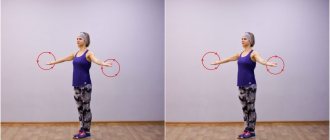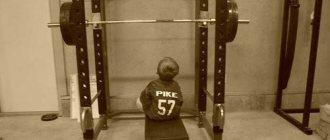The maximum heart rate during physical activity is between 160 and 200 beats per minute, to which it increases during the most intense exercise until exhaustion. Normally, the indicator should be less, because with this regime it is easy to overload the myocardium and blood vessels.
The permissible heart rate (HR) depends on age and type of load. With mild it ranges from 75 to 100 beats per minute, with severe it is 128-170. Such indicators are noted when classes are structured correctly and sports are beneficial. Women have a slower heart rate during exercise than men.
In any case, the required value should be calculated as a percentage relative to the maximum heart rate for a given age. This is 50-60% for walking, 60-70% for cardio training, 70-80% for strength training.
Pulse zone
Pulse is the rate of heartbeat (HR) over a minute. There is also the concept of a pulse zone, which defines the range from heart rate at rest to the maximum load on the body.
In everyday life, a person does not necessarily need to monitor his pulse zone. However, for athletes this parameter is very important. The fact is that when the heart rate is in one zone, it promotes weight loss, and at the maximum value the body’s endurance increases.
Each person has his own pulse zone, which is determined through laboratory tests (mandatory for athletes).
Pulse after workout
Upon completion of all exercises, the normal heart rate should be restored within 5-30 minutes, in most cases a quarter of an hour is enough. If it takes more time, the reason may be that the selected load is too high and the person is not yet ready for it. Activity needs to be reduced. And they monitor it with a heart rate monitor before and after training.
It is also important to pay attention to the gradual increase in the intensity of muscle and heart work.
Another reason why myocardial function returns to normal slowly may be a hormonal imbalance. Heart rate is affected by cortisol, adrenoline, norepinephrine, and medications taken. And in some cases, it is not enough to moderate physical activity; you have to contact a specialist.
Heart rate during training is an important indicator of the body’s condition, which can be easily determined by palpating a vein in the wrist or neck and using a stopwatch on a smartphone. Conventionally, 120-160 beats per minute can be considered the norm. More precisely, it is determined by the age of the athlete, his physical fitness and the intensity of the training.
Normal heart rate, permissible maximum heart rate
In a healthy middle-aged person, the heart rate at rest is about 65-75 beats/min. If we are talking about an indicator above 90 beats/min, then such a condition is usually called tachycardia (the heart beats faster). If the average heart rate drops below 60 beats/min, then this is a sign of bradycardia (the heartbeat slows down).
However, if we are talking about athletes, then for them at rest a heart rate of about 40 beats per minute is normal. Also, heart rate decreases during sleep, which is also considered normal.
However, if you wish, you can independently calculate the average maximum value of the pulse zone . To do this, you need to subtract your age from the number 220. For example, if a person is 35 years old, then it turns out 220 – 35 = 185.
That is, at this age, the pulse should not exceed 185 beats/min if a person plays sports. However, you need to understand that this is an average value that differs depending on numerous parameters.
It is worth considering that these calculations are only suitable for those who have been involved in sports for a long time. In addition, this is not the only method for determining the maximum permissible heart rate level.
There is another calculation scheme:
- For men . To obtain data on the maximum permissible heart rate, you need to subtract the man’s age from 214, and then multiply the resulting figure by 0.8. For example, 214 – 35 = 179, then 179 * 0.8 = 143 beats/min. That is, according to this scheme, at the age of 35 a man should not have a pulse above 143 beats/min.
- For women . Age must be subtracted from 209 and the resulting number multiplied by 0.7. For example, 209 – 35 = 174. Next you need to multiply 174 by 0.7, you get 121.8 beats/min. This is the maximum limit recommended for women aged 35 years.
You can also calculate the maximum permissible value even more accurately if you take into account not only the age, but also the weight of the person:
- For men . Must be subtracted from 210 ½ age. For example, 210 – 17.5 = 192.5. Next, you need to subtract 5% of the man’s body weight from the resulting number. That is, if he is 35 years old and weighs 100 kg, then it turns out 192.5 - 5 = 187.5. It remains to add 4, that is, 191.5 beats/min.
- For women . The calculation is the same, but you don’t need to add 4. That is, if a woman is 35 years old and her weight is 60 kg, then it turns out 210 - 17.5 = 192.5. Next 192.5 – 3 = 189.5 beats/min.
In this case, we are also talking about those people who play sports.
For a person who does not work out in the gym, the maximum heart rate usually does not exceed 100 beats/min. If your heart rate increases while doing housework or after climbing stairs, this is normal, but only if your heart rate returns quickly. The pulse during physical activity (the norm is calculated individually) and under other conditions may increase due to the following reasons:
- During sports training that is aimed at cardio loads.
- Because of fear or, conversely, intense joy. Also, the pulse increases in a stressful situation, if a person is very worried.
- If the body temperature has risen to 37 °C or higher or if the environment is very hot.
- Due to hormonal changes in the body.
It is noteworthy that in the morning the heart rate is calmer, and in the evening it increases.
It is also worth noting the so-called zones of activity severity:
| Zone of activity severity (how many beats/min) | Name | Under what conditions is it considered normal? |
| 50-60% (95-115) | Initial (warm-up area) | During an easy run. The training is aimed at strengthening the cardiovascular system. Breathing should be calm, the person can speak. This type of load is suitable for a beginner. |
| 60-70% (115-135) | Initial (activity zone) | More intense light running, during which fat is actively burned. This type of workout is also suitable for beginners and those who want to lose weight. |
| 70-80% (135-150) | Fitness (aerobic zone) | Exercises aimed at developing endurance. Breathing becomes more rapid, it is difficult to talk. |
| 80-90% (150-170) | Anaerobic (endurance zone) | Power training. This level of heart rate is allowed only for a prepared body. Otherwise, the condition is considered dangerous. There is redness of the face. It's almost impossible to talk. |
| 90-100% (170-180) | Red line (danger zone) | Endurance and speed training. Suitable for experienced professionals only. This type of training can only be done over a fairly long period of time. |
Dependence of heart rate on age
Pulse during physical activity (the norm depends on age, weight, health status and much more) can change throughout life . Heart rate is the main indicator of human health. That is why the doctor begins to evaluate the heartbeat even of a child in the womb of a woman.
Thus, from the first days of the fetus’s life, possible pathological abnormalities can be diagnosed. Heart rate indicators can range from 75 to 150 beats/min. If the pulse is weak, this indicates a possible oxygen deficiency in the growing body.
The highest heart rate is in newborns. Over the years it begins to decline. However, a child’s pulse is always faster than an adult’s, since children are constantly in motion, thereby stimulating contractions of the heart muscle. In addition, the child’s body grows, and the heart becomes smaller in relation to it.
Therefore, in a calm state, a child may have a heart rate of 110-170 beats/min and this is considered normal. By the age of 15, this figure drops to 60-80 beats/min. Separate normal heart rate range for athletes. However, as mentioned earlier, they should not bring their heart function to 100 percent.
The normal heart rate during physical activity is as follows, if we generally evaluate different age categories:
- At 20 years old, the norm is considered to be a pulse in the range of 100-170 beats/min.
- At 30 years old, even with intense training, heart rate should not go beyond 95-160 beats/min.
- At 40 years old, the norm is 90-150 beats/min.
- At 50 years old, you shouldn’t overload your body too much. The pulse should be between 85-140 beats/min.
- By the age of 60, this figure decreases to 80-135 beats/min.
- At 70 years of age or older, heart rate should not be allowed to go beyond 60-120 beats/min.
As you age, your heart rate changes for several reasons. First of all, the performance of the heart muscle decreases during contraction. This is due to cell stretching. The volume of blood that is pushed into the aorta also changes. With age, the duration of the vascular bed increases, the vessels become less elastic, and the body becomes more susceptible to adrenaline.
What should your heart rate be during exercise?
In many ways, heart rate depends on the specific load. When walking and training, heart rate indicators differ and have their own characteristics.
When walking
During normal walking, the norm is considered to be from 100 to 150 beats per minute. If these indicators increase, then the person experiences shortness of breath, dizziness, tingling in the side and heart area. If this happens, then this indicates that the person needs better physical preparation.
Walking belongs to the category of loads that is estimated at 35% of the load. That is, this is an acceptable standard of gravity for a person who does not play sports. This is why walking is most often recommended for older people.
During cardio training
Fitness training falls into this category. That is, the pulse should be within 135-150 beats/min . However, you must first undergo a specialized computer examination, which will help determine the lower and upper threshold of your heart rate.
Heart rate zones depending on physical activity
If we talk about cardio training, the recommended duration of such exercises is 40-50 minutes.
Male indicators
The pulse during physical activity (the norm for the stronger half of humanity differs from the standard indicators for women) changes throughout the day. The values are influenced by the degree of training of men. For example, an athlete’s heart rate is approximately 20-30% lower than that of those who do not train.
If we talk about men, their heart rate can change depending on the conditions. For example:
- During active walking, heart rate is about 90-100 beats/min. If, when walking, the pulse rises to 120 beats/min, then this is not considered critical if the man does not experience shortness of breath or dizziness.
- In a calm state, heart rate indicators are in the range of 60-80 beats/min.
- If a man is overweight and leads a sedentary lifestyle, then the heart rate can be up to 120 beats/min.
After training, a man’s pulse returns in approximately 30 minutes.
For girls
For representatives of the fairer sex, the pulse may vary depending on a greater number of factors. For example, heart rate changes during the menstrual cycle, pregnancy, weight gain, and overeating.
During physical activity, the pulse intensity of a woman aged 20 years should be 110-150 beats/min. At 30-40 years old, this figure decreases to 105-140 beats/min. After exercise, heart rate should recover in approximately 20 minutes. If training is aimed at endurance, then full recovery occurs after 40 minutes.
When walking, heart rate should be within 100-120 beats/min. A lower value indicates that the woman is in good physical shape. With a pulse of 120 beats/min. It is worth reducing the load and increasing the time for walks and quieter activities.
Also, the pulse of men and women is greatly influenced by lifestyle. If a person drinks coffee very often, drinks alcohol and smokes, then the heart rate will not be stable and may increase without physical activity.
In childhood
Normal heart rate indicators in this case can be divided into several periods:
- In a newborn . During this period, the child’s pulse is 120-140 beats/min. However, how long the child was in the womb is also taken into account. Premature babies have a faster heart rate.
- In a baby . By the first month of life, the baby's heart rate begins to gradually decrease. By 1 year, it is usually about 132 beats/min.
- In young years . The average heart rate at 2 years is considered to be 124 beats/min. However, at this age the child is very active, he is constantly on the move, and his emotional state can change frequently. Therefore, a heart rate in the range of 94-154 beats/min is considered normal. With such parameters, there is no reason to assume the presence of pathology.
- At a preschooler . At the age of 5-6 years, the pulse is considered normal at about 106 beats/min. Gradually, the heart rate stabilizes, as does the moral state of the child.
- At a schoolboy's. At 10 years old, the normal heart rate is 68-108 beats/min. However, at 7 years old the heart rate will be higher despite the fact that this is the same age category. It is recommended to consult a doctor to more accurately clarify the norm at this age.
A teenager's heart rate is the same as an adult's. On average, heart rate is 75 beats/min.
For active people
The most stable heart rate indicators are observed in people aged 15 to 50 years. If we talk about heart rate in athletes, there is no clear optimal value, since everything depends on the specific load.
During aerobic exercise, the heart rate is usually slower, and when running it can reach its maximum value. Heart rate also differs when swimming and cycling. To calculate the approximate parameter of an athlete’s maximum heart rate when running, it is necessary to multiply the person’s age by 1.03 and subtract the resulting number from 220.
For example, if the athlete is 30 years old, then it turns out 1.03 * 30 = 30.9. After this, you need to subtract this number from 220, you get 189.1 beats/min. However, during a normal workout that does not involve running, the maximum value is usually considered to be 180 bpm.
Thus, when running, an increased heart rate is allowed, but only in the case of a short exercise or if a person has been involved in sports for a long time and does not experience breathing problems while running.
Leg Raise
This exercise requires balance, so do it slowly, holding on to a chair or wall for balance if necessary.
- Stand up straight, place your hands in front of you in a protective position.
- Lift your right knee and push your leg out, avoiding hyperextension of the knee.
- Balancing on your left leg, bring your right leg behind you and place your hands on the floor.
- Place your left foot next to your right, pausing briefly.
- Step forward with your left foot into a runner's lunge, stand up and kick with your right foot.
- Repeat the exercises for the second side. You need to do a series of 1-3 sets of 10-16 repetitions.
Instructions
It is recommended to measure your pulse during physical activity (the norm may be different for each person) by a doctor or using specialized equipment. As a rule, a tonometer is used for this (a device that allows you to obtain data on pressure and heart rate). However, you can measure your pulse without additional equipment.
For example, in a newborn baby, the pulse can be most clearly felt in the neck in the area where the carotid artery is located. To determine the pulse in older children, adolescents, and adults, measurements are usually taken from the radial artery. It is located on the inside of the wrist.
For correct measurement:
- First of all, you need to press lightly with your index and middle finger on the area that is 2 cm higher than the first crease on the wrist.
- Next, you need to count the pulsations for 15 or 30 seconds. It is best to use a stopwatch for this.
- After this, the resulting number must be multiplied by 4 (if the measurement lasts 15 seconds) or by 2 (if the change lasts 30 seconds).
It is recommended to carry out such measurements in the morning. It is also important to ensure that the room where the procedure is performed is quite warm. If a person is cold, the heart rate automatically increases. It is also not recommended to measure your pulse immediately after eating.
Also today there are various bracelets on sale that allow you to accurately determine heartbeat readings. These devices are especially popular among professional athletes.
A device of this type takes heart rate measurements after a specified period of time. After this, the bracelet vibrates or makes a sound signal. All that remains is to evaluate the evidence. However, experts question the accuracy of such gadgets.
Express assessment of blood pressure levels
For information on how to determine pulse pressure and how to interpret the information received, you can ask the emergency medical services staff or the staff of the intensive care units of inpatient healthcare institutions. They will explain that some effort is required to push blood to the peripheral arteries and overcome the general peripheral vascular resistance. In this case, it is blood pressure. And by detecting the presence of pulses in accessible arteries, one can quickly guess whether the patient is in a state of hypotension and shock, as well as how severe his illness is.
The following theses will answer the question of how to determine pressure by pulse. If pulsation is detected in the carotid artery, then the systolic pressure level is 40 mmHg or more. If there is a pulse on the brachial artery, the blood pressure level will be above 60-70 mmHg, and if there is a clear pulsation on the radial artery (at the wrist), then the systolic blood pressure value is reliably higher than 80. As can be seen from the presented figures, a rapid assessment of the patient’s condition without using tonometer occurs, although this must be confirmed instrumentally. It should be noted that in a professional environment there is no talk about pulse tension.
Possible violations
If the pulse is too rapid or, conversely, slower than it should be according to standards, then perhaps we are talking about a deviation.
If, after all the calculations, the pulse falls outside the acceptable range, then you need to find a way to normalize the indicators. First of all, you need to take a second measurement approximately half an hour after the first one. During this time, you should rest well and avoid physical activity. Breathing exercises help some people cope with the problem.
If, after repeated measurements, the pulse is again very different from the norm, then you need to understand why this is happening.
Low performance
This condition is called bradycardia, that is, the heart rate is below normal. If at the same time a person does not experience weakness and continues his usual sports training, without noting any deviations for the worse, then such a condition does not apply to disorders or malfunctions in the body.
If a person has never played sports, then such a manifestation is usually accompanied by:
- weakness;
- dizziness;
- nausea;
- lack of appetite;
- rapid fatigue.
If at least one of these symptoms appears, it is recommended to consult a doctor to understand the cause of the low pulse and malaise.
High performance
If your heart rate increases, you need to make sure that the change in heart rate is not associated with:
- overwork after intense physical exertion;
- severe emotional stress;
- anemia, which is characterized by low hemoglobin levels;
- increased body temperature as a consequence of the initial stage of a viral disease;
- disturbances in the functioning of the cardiovascular or respiratory system.
An increase in heart rate is not considered normal if it exceeds the standard values by 20%.
If your heart rate increases, you should immediately consult a doctor if, at the same time as your heart rate increases, you experience confusion, dizziness, attacks of vomiting and nausea. Also, with an increased heart rate, a person may feel faint, sweating increases, and vision becomes worse.
If your heart rate is low during exercise
A low heart rate during exercise, as noted above, indicates a disruption in the functioning of the cardiovascular system. Doctors say that people who do not reach one hundred beats per minute in six minutes are at risk of developing a complex form of arrhythmia in the future, so they need to be examined.
A slow pulse is affected by blood pressure lowering medications for tachycardia, lack of thyroid hormones, and stomach ulcers. Professional athletes tend to have low heart rates due to overtraining.
You need to know your pulse during training in order to exercise effectively without harming your heart. For the calculation, the maximum value and zone of permissible increase in aerobic loads are used. The correct training plan is one that slows your resting heart rate.
Who is prohibited from training?
If a person experiences severe discomfort after training, and it takes too long for the heart rate to recover, then it is worth reviewing the exercise regimen and switching to a simpler level of physical activity.
You should not engage in sports activities if you have cardiovascular diseases, cancer, or poisoning . Doctors also prohibit training for those diagnosed with hormonal disorders and disruptions in the central nervous system. If the pulse does not level out within 40 minutes. after completing the workout, this is a reason to visit a therapist and cardiologist.
For those who play sports, heart rate is an extremely important parameter.
Before starting training, during future physical activity, it is necessary to determine the maximum and minimum permissible heart rate values and only after that begin training.
Gradually, the body will become stronger and during training the pulse will be lower, closer to those indicators that are normal for a person in a calm state.










